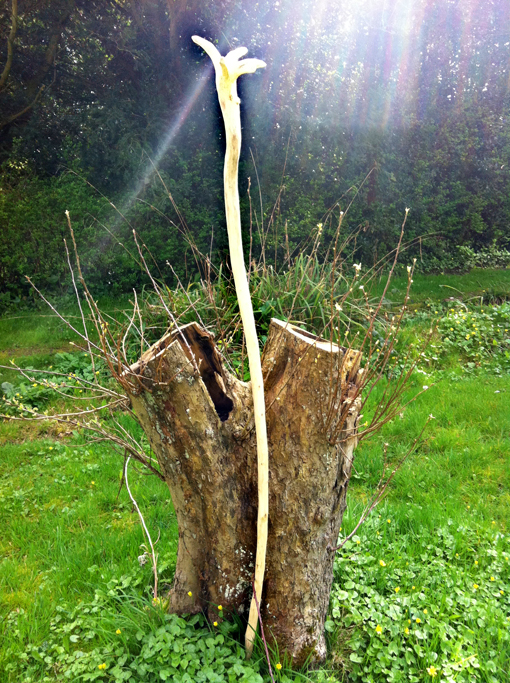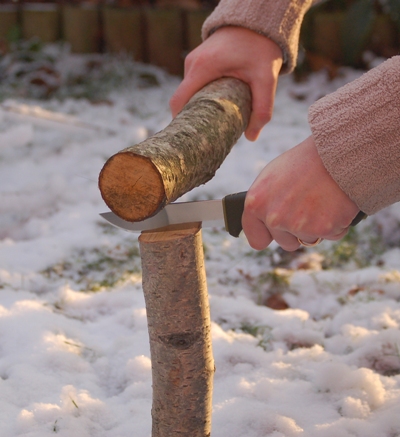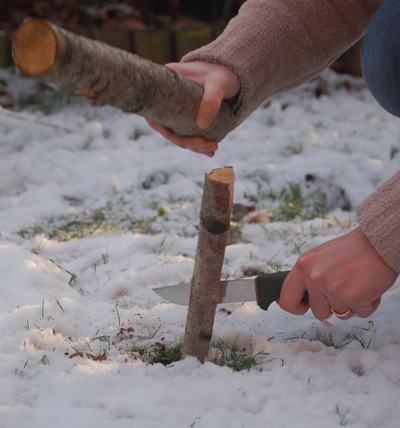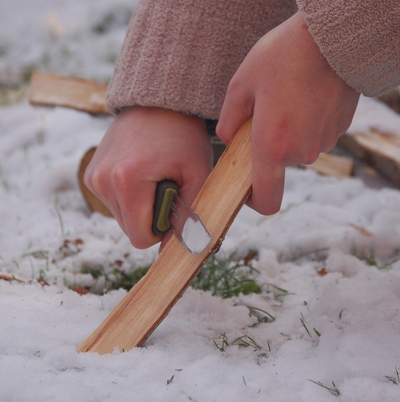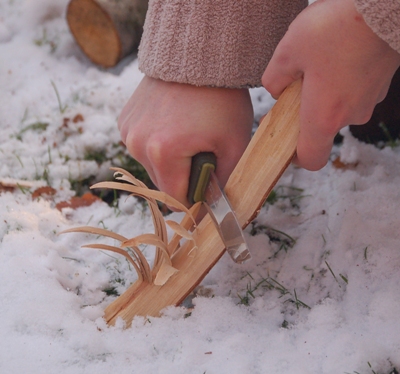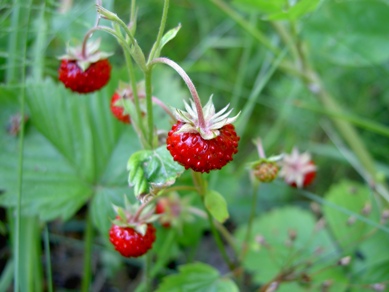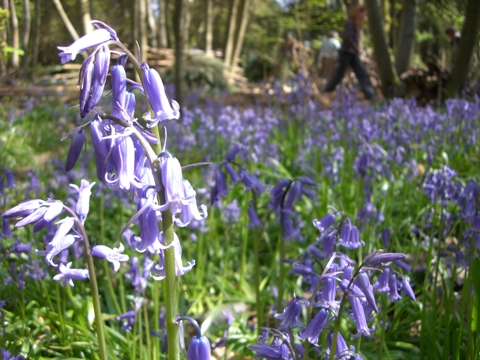 Sitting around a camp fire in the middle of a wood or forest is a magical experience, but to be able to create something that you’ve put time into making is truly wonderful. Taking time to design and plan your Staff and then to spend time taking the bark off and carving your own design and to personalise it with branding you initials or logo.
Sitting around a camp fire in the middle of a wood or forest is a magical experience, but to be able to create something that you’ve put time into making is truly wonderful. Taking time to design and plan your Staff and then to spend time taking the bark off and carving your own design and to personalise it with branding you initials or logo.
The staff you make will not only be a great item for hiking holidays but it will last you a life time. You may consider making a Tracking Stave; an invaluable resource whilst out Tracking. How to use them is also taught on our Tracking Course.
 The wood we tend to use are seasoned Hazel, Ash or Oak these will give you the best results and finished correctly make them very durable. The knots and curves of the natural wood make them look very rustic and with adding a personal touch it makes your staff an extension of you.
The wood we tend to use are seasoned Hazel, Ash or Oak these will give you the best results and finished correctly make them very durable. The knots and curves of the natural wood make them look very rustic and with adding a personal touch it makes your staff an extension of you.
Choosing the right tree to coppice is very important, and if you are planning on making a Staff on your own, remember to always get the woodland owners permission. If, you find a branch or piece of wood that has fallen from the tree, even better. If the branch you are using is still green, once you’ve stripped the bark off you will need to let it dry for a few weeks. This will season the wood and make it ideal for using as a staff. If the wood has been collected from a fallen branch make sure there is no wood worm on any part of the branch even if it’s not on the part to be used for your staff.
 The design you choose or the way you finish your staff depends on your design and ideas, as long as once carved, branded or just stripped and rubbed down you seal it with wax, wood stain or varnish. This will help preserve the wood and protect it in all weathers.
The design you choose or the way you finish your staff depends on your design and ideas, as long as once carved, branded or just stripped and rubbed down you seal it with wax, wood stain or varnish. This will help preserve the wood and protect it in all weathers.

Our first ever Staff Making course was in February and we had eight eager participants who made beautiful staffs, some chose to use the branding irons to personalise their creations and others added button compasses to the top. They all worked hard throughout the day around the camp fire with hot drinks to hand and within a relaxed, sociable atmosphere.
One participant commented
“I didn’t realise how much went in to making a Staff. The day was just what I wanted, enjoyable, informative and with excellent instruction. I’m going home very happy.” Matt
Another said….
“Thanks for another great day in the woods around the Fire; I learnt a lot and met some truly lovely people.” Kim
 Our next Staff Making day will be on 27th March at our beautiful woodland venue near Canterbury, Kent. We provide all the seasoned wood and materials needed and you will be able to choose from a variety different wood and lengths.
Our next Staff Making day will be on 27th March at our beautiful woodland venue near Canterbury, Kent. We provide all the seasoned wood and materials needed and you will be able to choose from a variety different wood and lengths.
It’s a great way of spending quality time away from all the stresses of modern life, and you come away with something you have created and that can be used for years to come.

